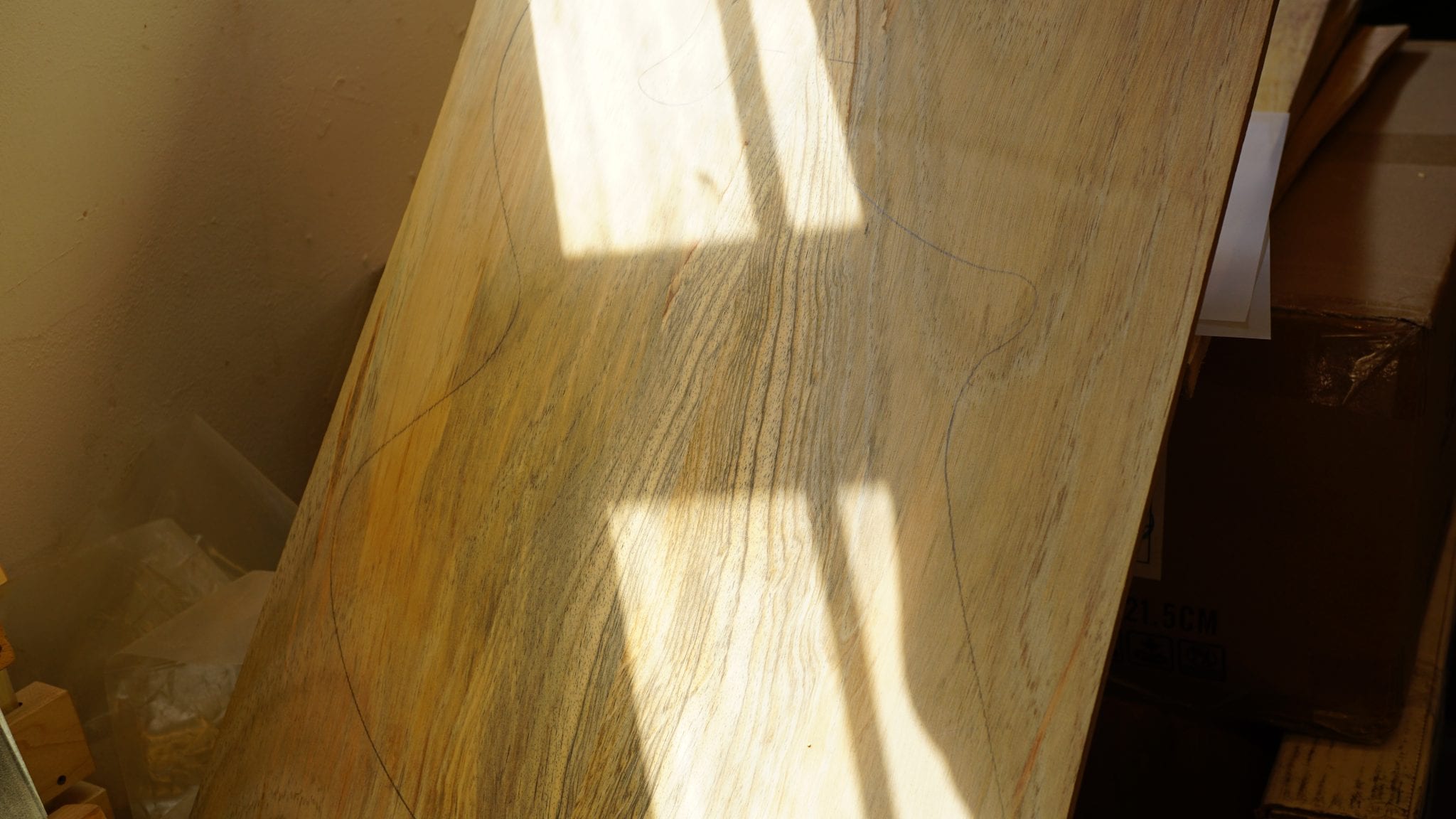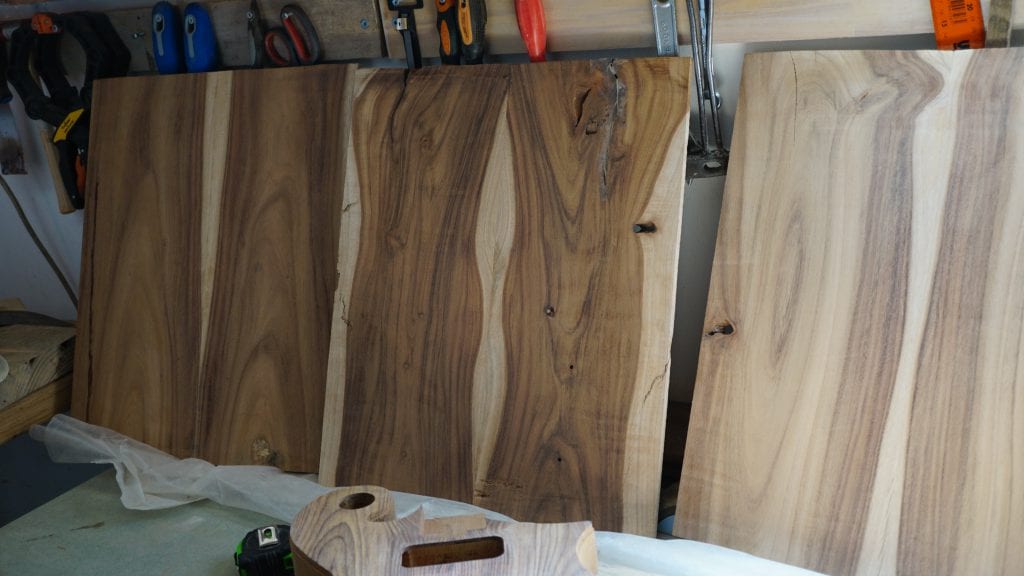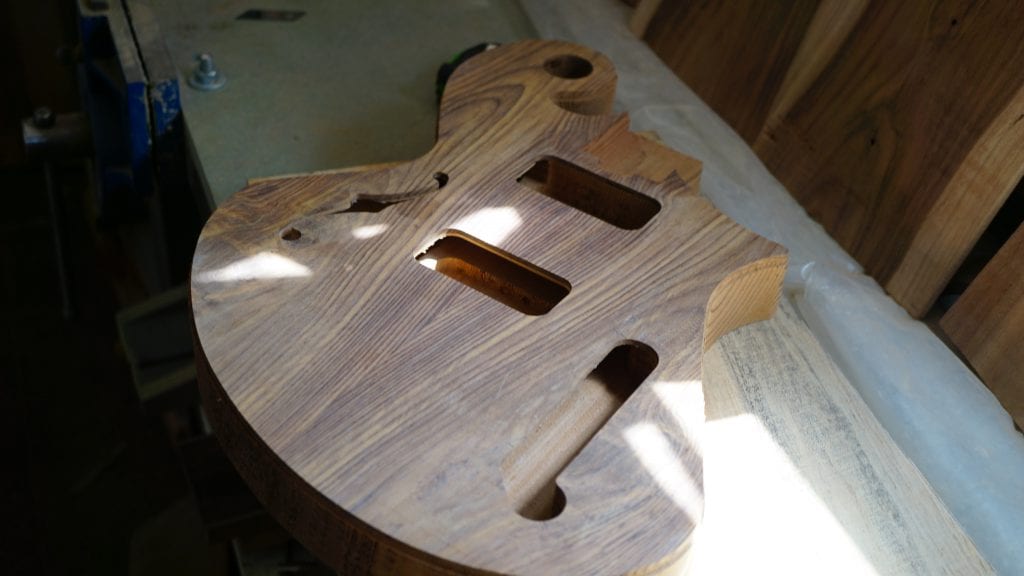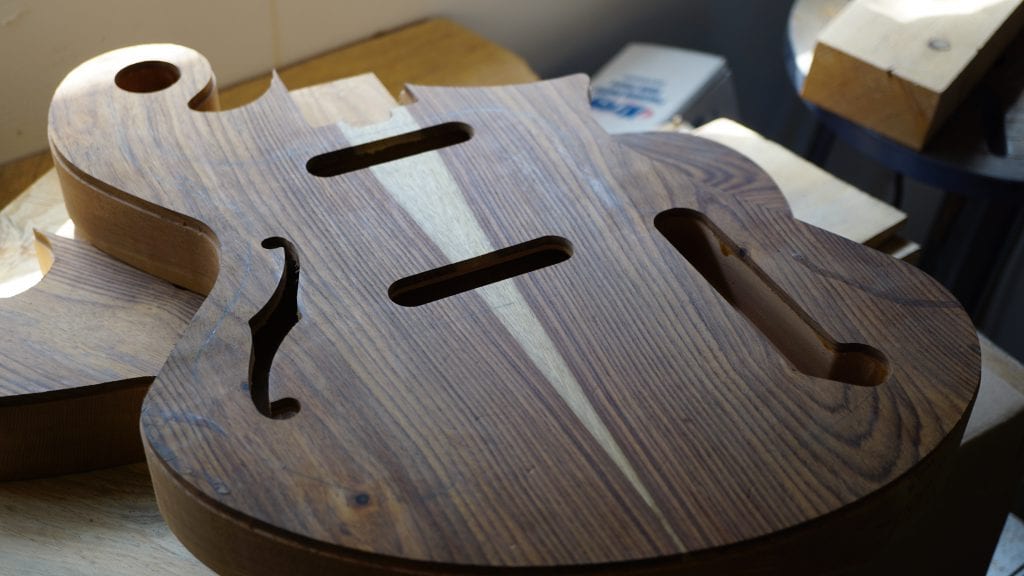
Our Exotic Biblical Wood Handmade Guitars
As a boutique guitar company, we create a limited run of guitars per year. This enables us to explore the world of exotic lumber and to use limited sources of salvaged lumber for our custom guitars.
What many of us don’t realize is that the classic wood combinations that were used in the electric guitars of the ’50s were chosen for two reasons -availability and the ease of use.
The first Tele was made from pine, which is very difficult to work with, in the first place because of the endless tear-out of wood fibers. That’s why the classic Tele ended up with a Swamp Ash body. Same goes for maple necks. These are woods that are great for routing. Same goes for Mahogany and Rosewood. This excessive use of lightweight Honduran mahogany and Brazilian Rosewood in the wood industry has brought these species to the verge of extinction. That is why many guitar builders started looking for eco-friendly sources of lumber. These two sources are reclaimed lumber and salvaged lumber.
Many use these two terms to describe old lumber or recycled lumber, but that is not the case, and there is a difference between the two.
Reclaimed wood is wood that was usually used for construction and buildings -that is, Old barns, demolished or restored buildings, old docks, antique furniture, and even old whiskey or wine aging barrels. The wood is reused and reshaped and becomes a guitar.
This act of reshaping and reusing defines it as “reclaimed Lumber.”

There are various things that we as luthiers might be looking for in reclaimed lumber for custom guitars.
The first one for me is, of course, keep mother earth happy.
With the current Amazon fires and the ill state of the world’s “Green Lungs,” taking down entire forests for building guitars is harmful and unethical.
Another thing is the beautiful patina that can be found in reclaimed wood from the exposure to years of tear and wear, the elements, oxidation, and so on.
Reclaimed wood is also extremely stable and dry because basically is naturally air-dried.
There is also the historical background- building a guitar from the remains of a famous building, stadium, stage, or your grandpa’s barn.
One of the most famous reclaimed wood guitar is Queen guitarist Brian May – the “Red Special” Guitar.
It was built by him and his father Harold in the early 1960’s
The guitar’s neck was constructed from a hundred-year-old fireplace mantel.
The fingerboard and different parts of the body were made from oak that was taken from an old table.

Custom Guitars from Salvaged Wood
My favorite source of lumber.
Unlike reclaimed wood, salvaged wood has not been used before for building or construction.
Its source comes from trees or wood that can be found in their raw and natural state.
It might be dead trees, (Beetle Kill Pine for example), fallen trees, or trees that had to be removed.
The source of lumber from these trees is the best, in my opinion.
These are old trees, so you usually get large chunks with beautiful coloration, beautiful wood grain patterns, deeper and rich color.
Many of the pieces I use were aged for centuries, and there are many unique features in these old trees that cannot be found in younger trees.
Most of the material I use at the moment for my guitars is local and sourced here in Israel.
Because of the dry climate, the local salvaged lumber is dense and
The grain pattern is extremely beautiful, and you get amazing.
The coloration and wood grain construction in the local Rosewood, Mediterranean olive, Jerusalem pine, and Judean Desert Acacia is unbelievable.
Both reclaimed lumber and salvaged lumber is known as old-growth wood.
However salvaged lumber usually fits this term better, because its origin comes most of the time from old trees.
Salvaged lumber is also rare and expensive.
Many times there is also a small percentage that I can use from the salvaged material, not to mention the fact that I have to have to cut, plane and prepare the pieces myself.
However, the stunning and unique result makes all this effort worth it.
In the next few articles, I will focus on the local species, and my adventures as a “lumber hunter”…
In both cases, reclaimed and salvaged wood is ‘old growth’. Since the wood came from old growth forests it is harder, denser and has more character than new growth wood. They also share the same benefits. Both are extremely durable and will can last for generations. The wood can be re-finished, converted and reused in many different ways. Best of all, both prevent new trees from being cut down.
Today there is much interest in using reclaimed and salvaged wood in home renovations and decor. It is being used as hardwood floors, to make furniture, create feature walls and art. The costs for each varies considerably. Reclaimed wood is often less expensive traditional lumber. Salvaged wood, however can be more expensive. It must be collected, transported, milled, and is often re-finished before it’s re-sold. There is also a lot of waste that doesn’t happen with younger woods. Up to 75% of a tree that was fallen or salvaged is often unusable.
Although different, it really doesn’t matter whether you use reclaimed or salvaged wood. Each offers a one-of-a-kind building material. Both benefit the environment and reduce what goes in a landfill. The next time you shop for furniture or plan a woodworking project, consider using reclaimed or salvaged wood. Reusing and recycling are trends that are here to stay.



